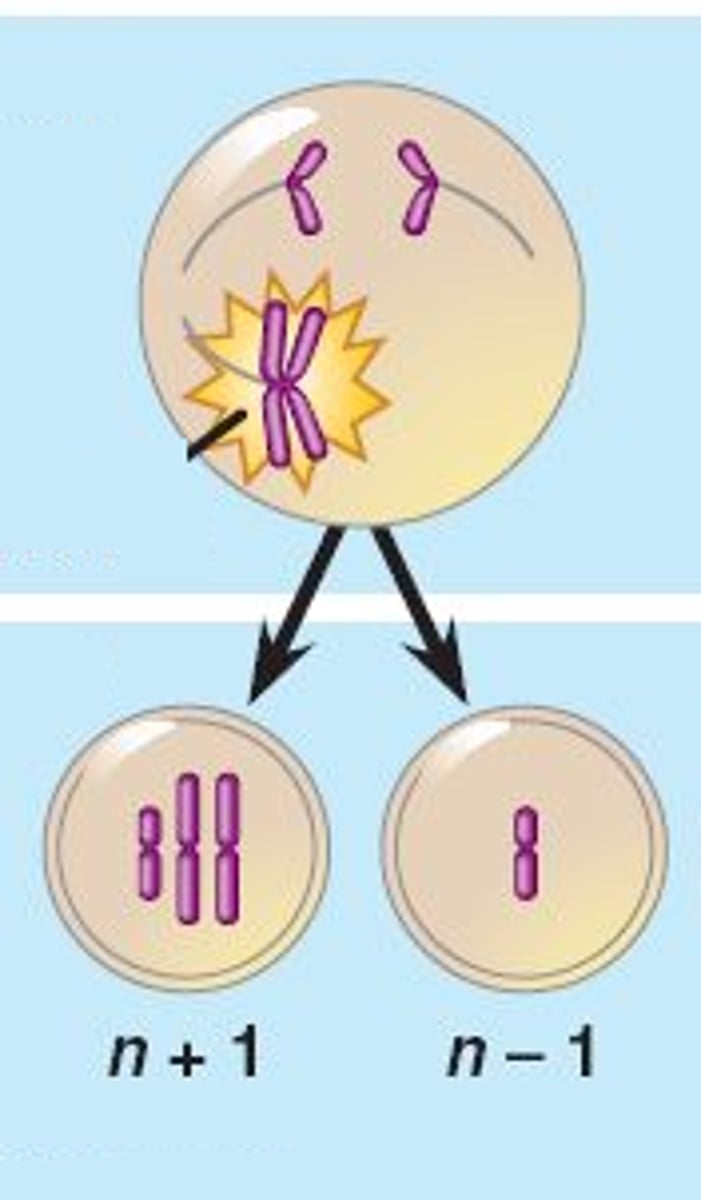Genomic Organization and Meiosis in Eukaryotes
1/170
There's no tags or description
Looks like no tags are added yet.
Name | Mastery | Learn | Test | Matching | Spaced |
|---|
No study sessions yet.
171 Terms
Chromosome number
A distinguishing characteristic of a species.
Diploid cells
Cells that have an even number of chromosomes.
Chromosome numbers in humans
46 chromosomes.
Chromosome numbers in chimpanzees
48 chromosomes.
Karyotype
The description of the chromosomes as seen in the karyogram.
Karyogram
An image of chromosomes arranged in a standard format.
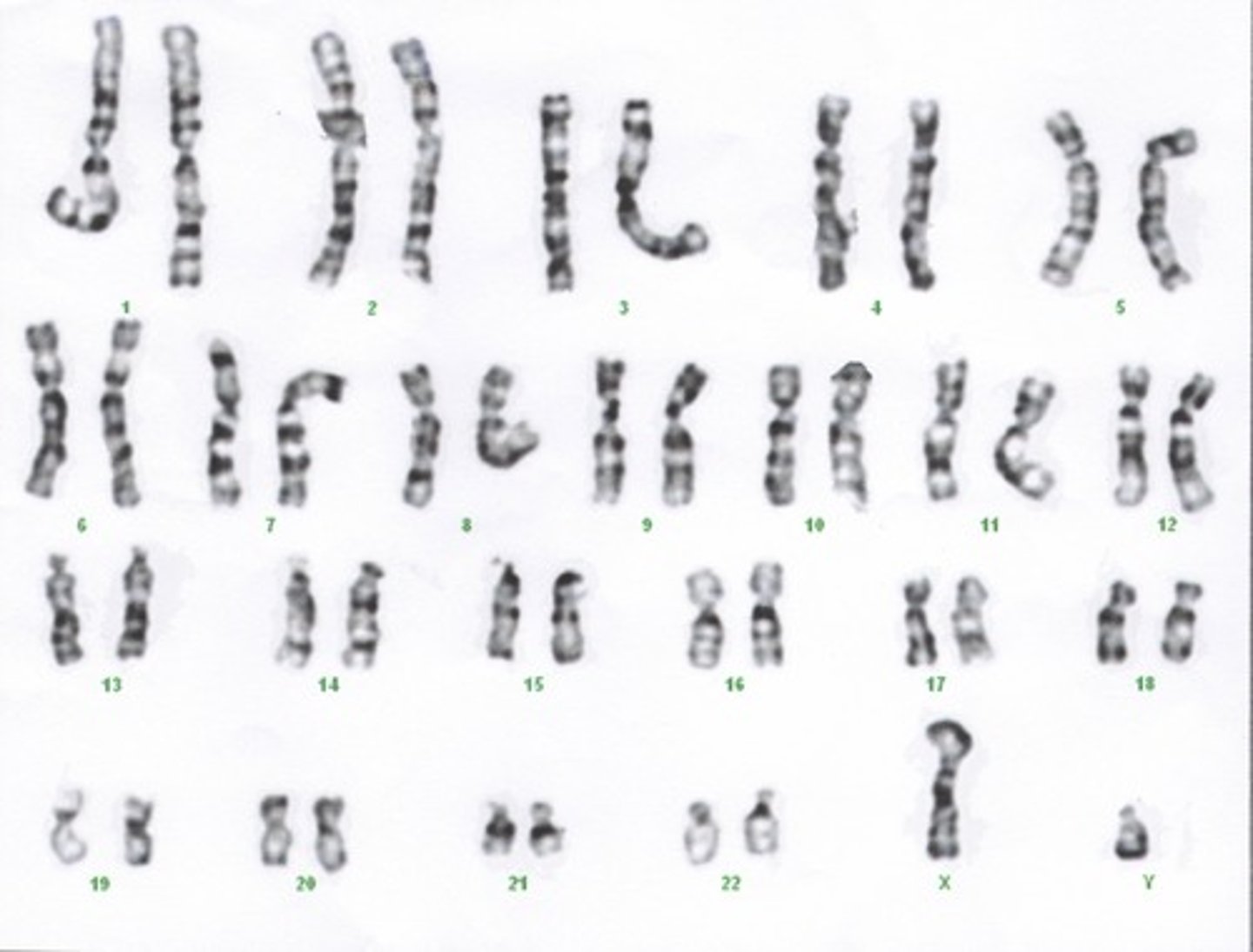
Autosome
The first 22 pairs of homologous chromosomes in humans that do not contain genes that determine biological sex.
Sex chromosome
The 23rd pair of chromosomes in humans, which includes two versions: X and Y.

Typical female chromosomes
Two homologous chromosomes (XX).
Typical male chromosomes
One of each, nonhomologous chromosomes (XY).
Genome
The whole of the genetic information of an organism, including the entire base sequence of each DNA molecule.
Gene
A sequence of DNA bases that codes for a functional RNA or protein product; the basic functional unit of inheritance.
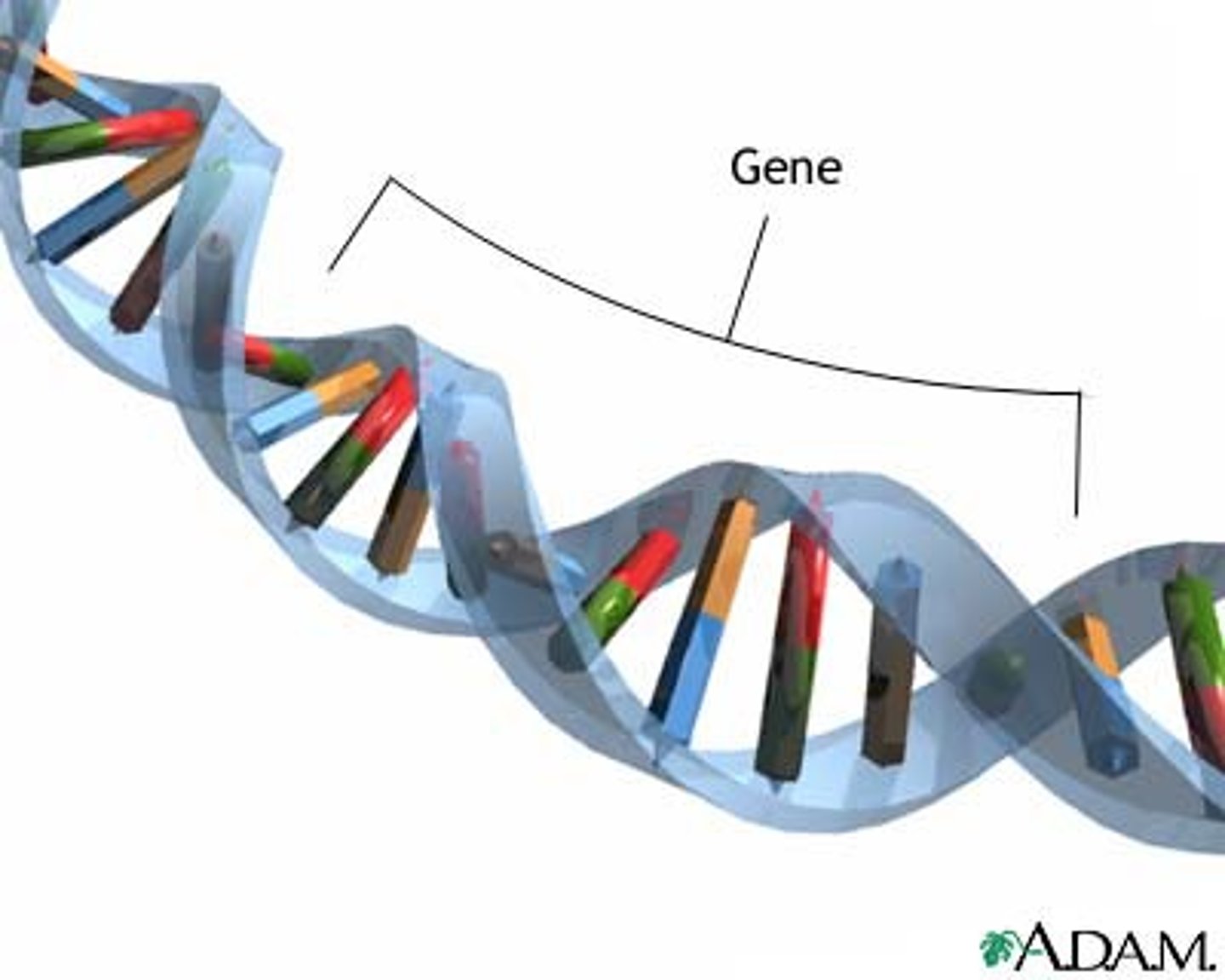
Allele
Variations of a gene that occupy the same locus on the chromosome.

Single-nucleotide polymorphisms (SNPs)
Differences in a base between two genes that vary by one to a few base pairs.

Variation in genomes
Genomes vary in overall size and base sequence, with variation between species being much larger than variation within a species.
Genome size measurement units
Base pairs (bp)
Number of Chromosomes & Complexity Relationship
The number of chromosomes in a species has no specific significance nor does it indicate any relationship between two species. The number of chromosomes does NOT correlate to the number of genes.
Whole genome sequencing
Determining the entire base sequence of an organism.
Technological improvements in DNA sequencing
Technological improvements have sped the DNA sequencing process.
Applications of genome sequencing
Investigation of evolutionary origins and could lead to personalized medicine.
Ethical considerations of genome sequencing
Breach in privacy -> An individual's genome contains an extensive amount of personal information.
If mishandled or disclosed, it could lead to genetic discrimination by employers, insurance companies, or other entities.
Meiosis
Maintains correct number of chromosomes by reducing by half.

Cross-breeding between species
Cross-breeding between closely related species is unlikely to produce fertile offspring if parent chromosome numbers are different.
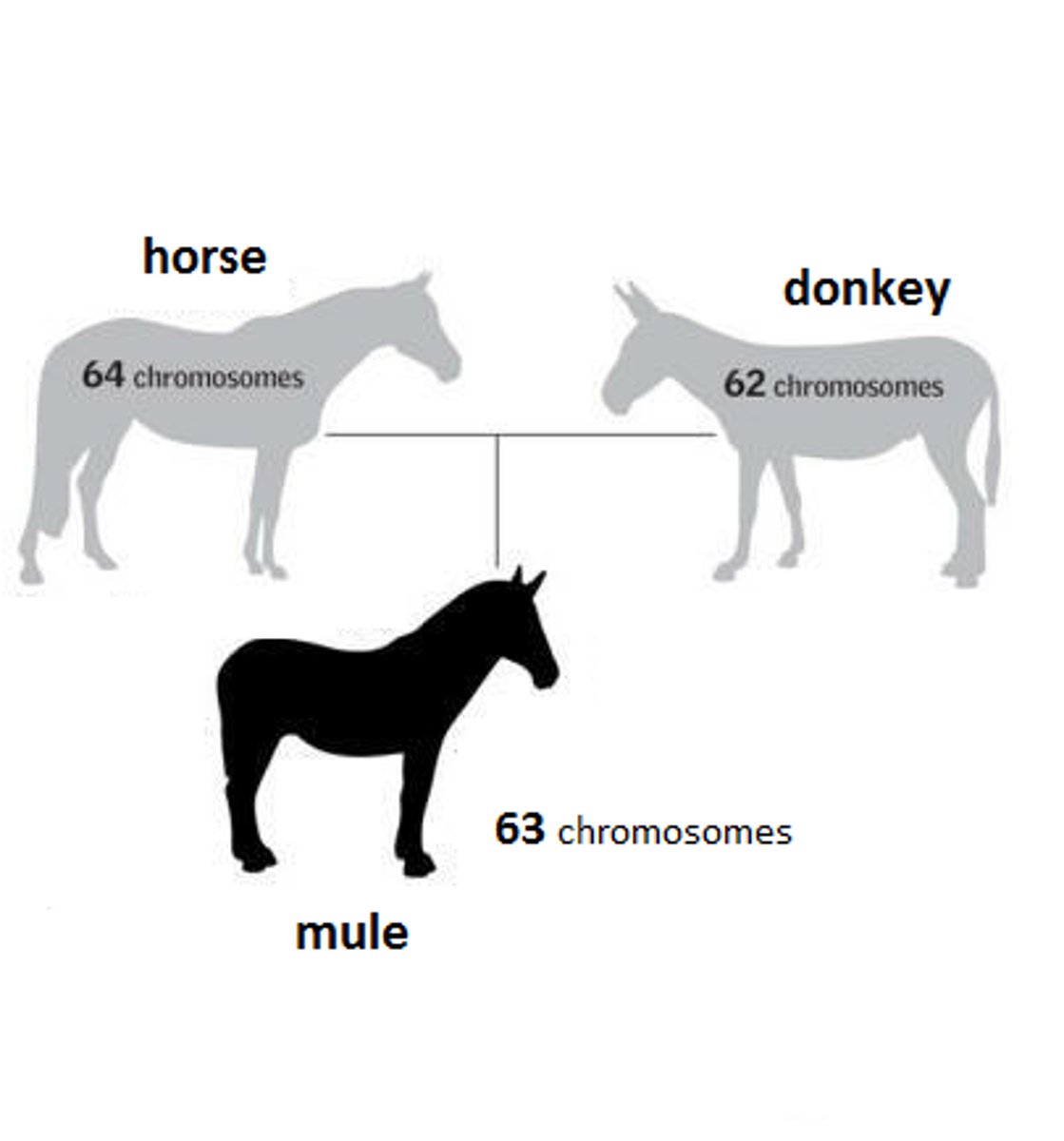
Mule
A sterile offspring produced by mating a donkey and a horse due to differences in parent chromosome numbers.
DNA barcode
Short sections of DNA from one gene.
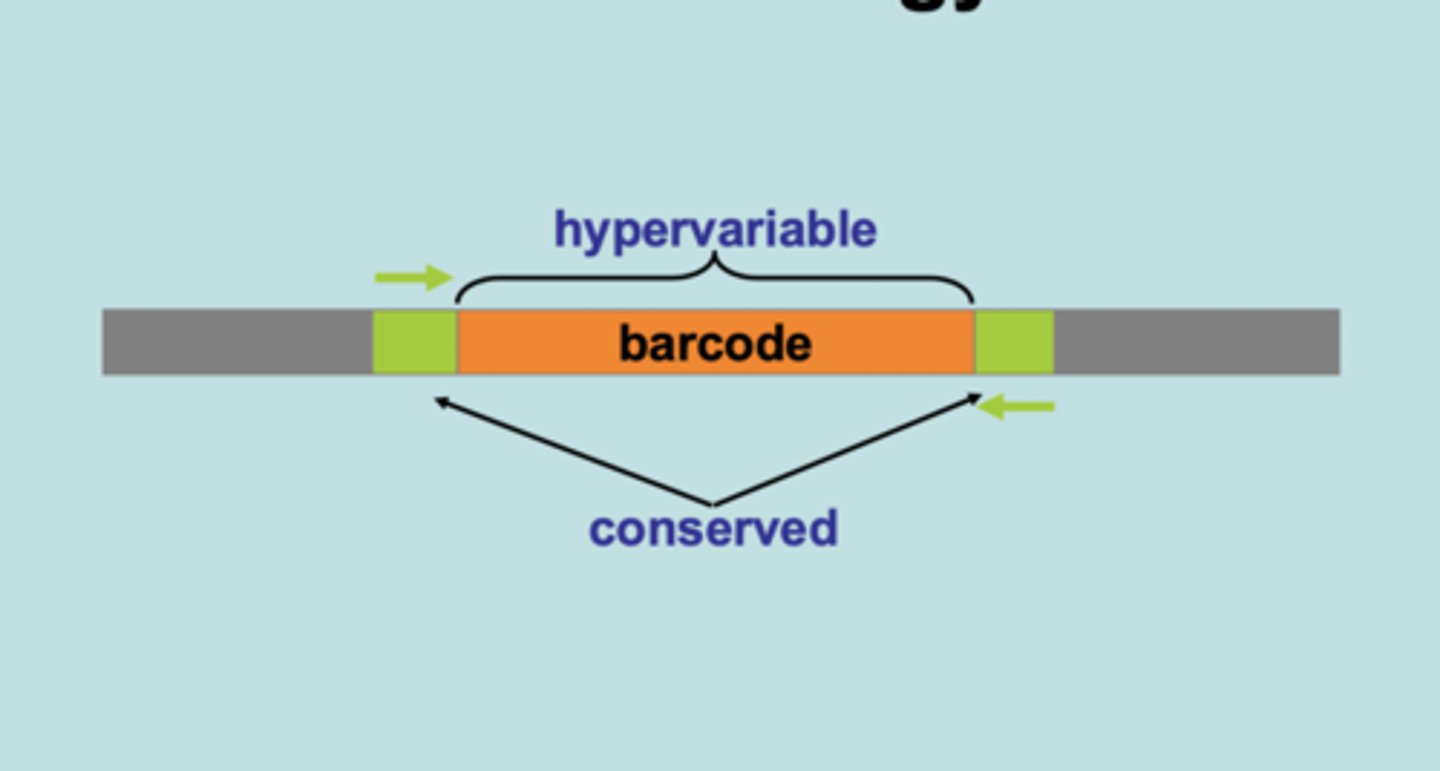
Environmental DNA
Collected from water, soil, or any other part of the abiotic environment.
DNA barcoding
Identify species from small pieces of tissue that might otherwise be difficult to recognize.
Applications of DNA barcoding
Species identification for conservation.
Structure of a nucleosome
A DNA molecule wrapped around a core of eight histone proteins held together by an additional histone protein attached to linker DNA.
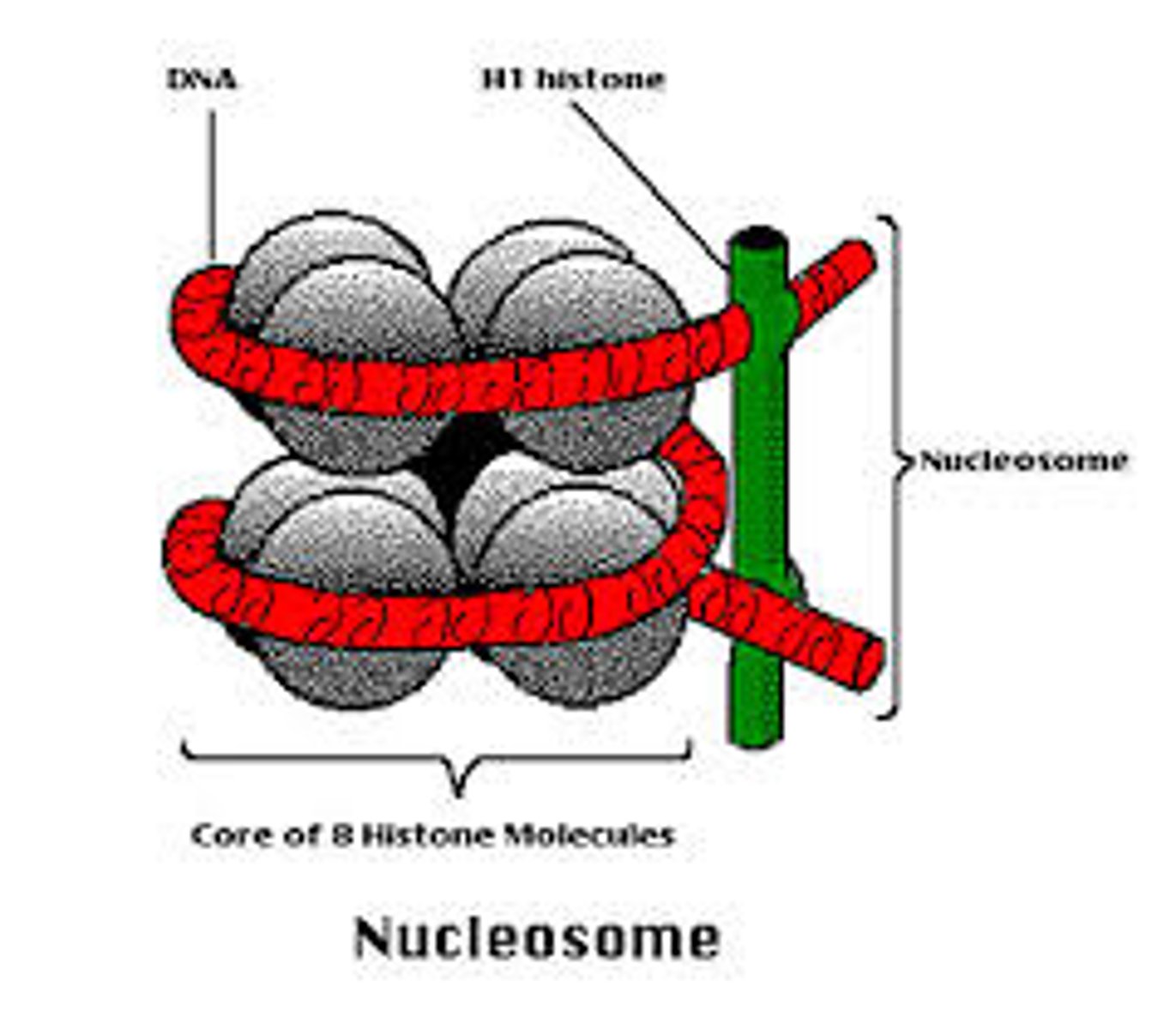
Linker DNA
nucleosome are joined by DNA that runs between them.
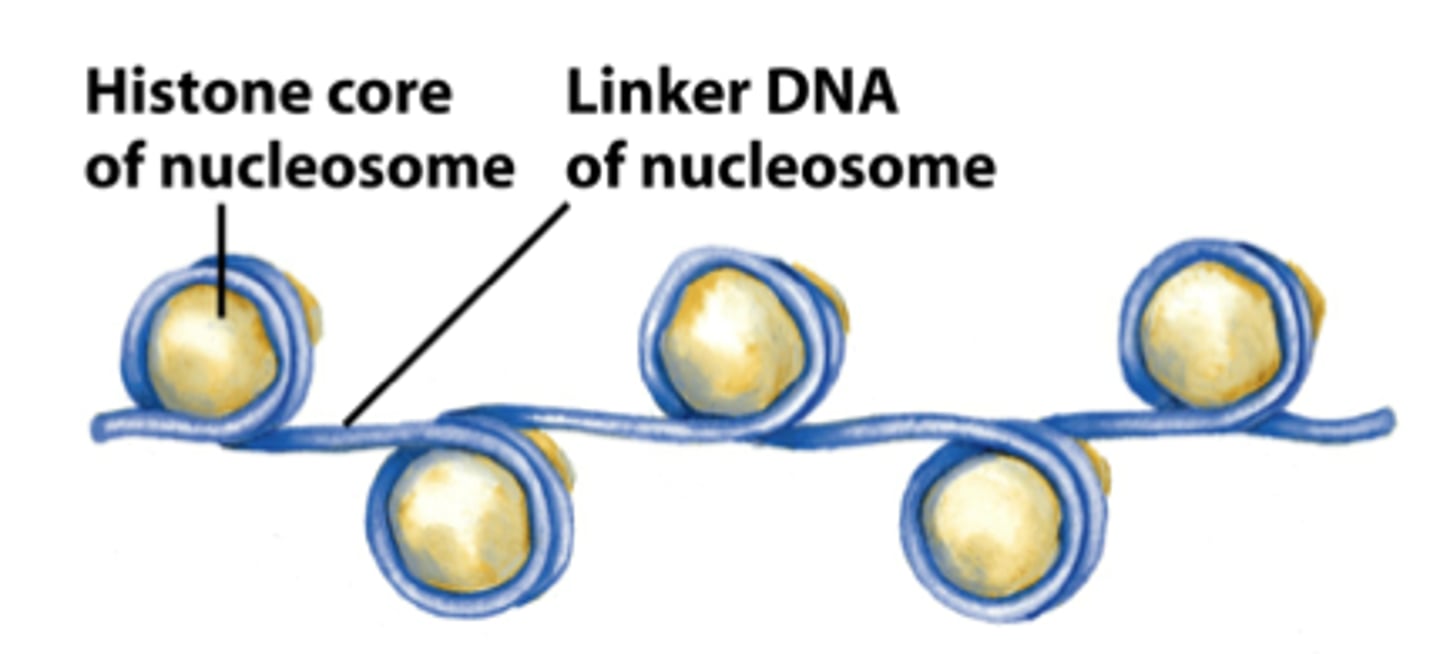
What is the basic structural unit of DNA packaging?
Nucleosome
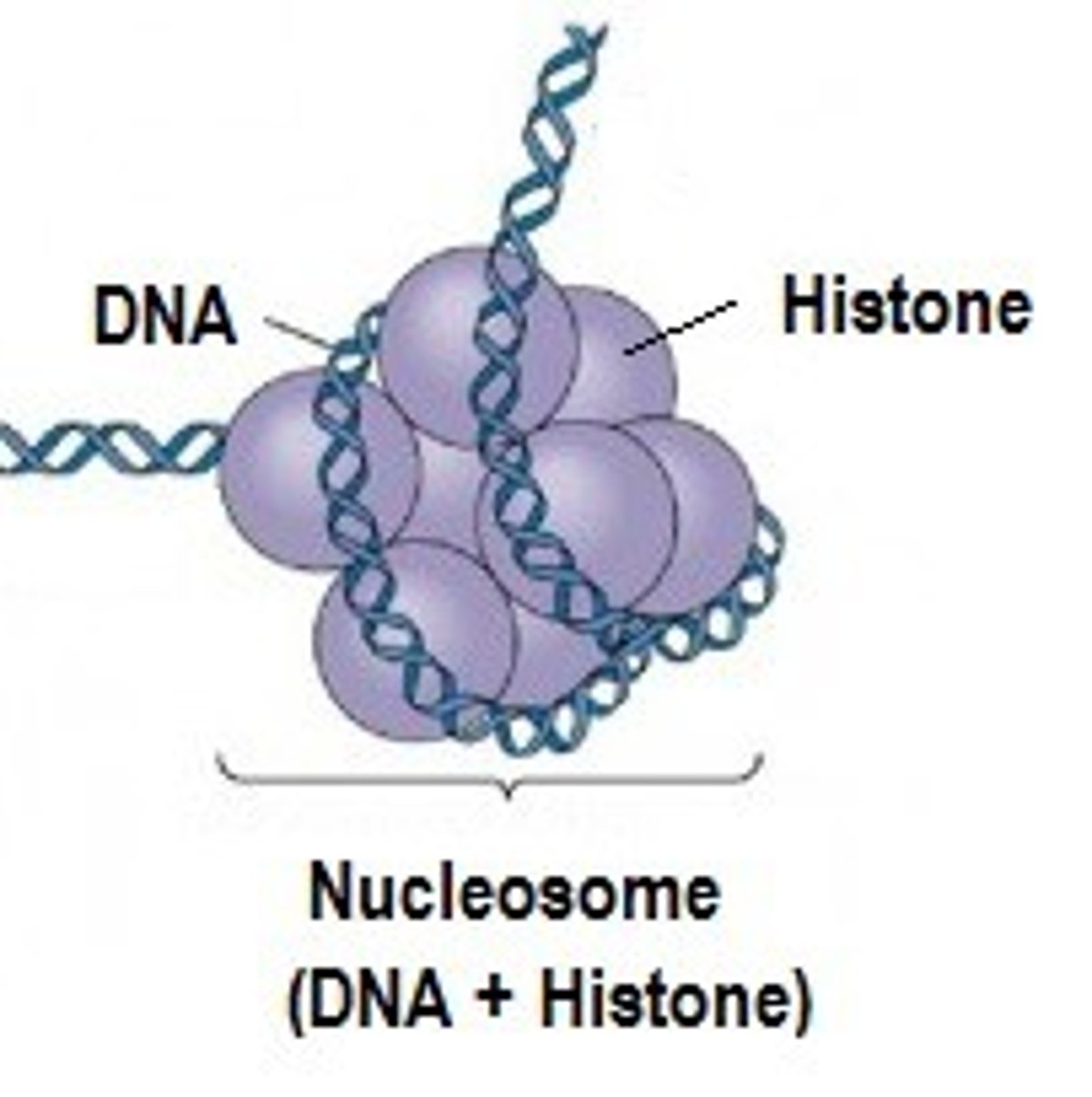
What does a nucleosome consist of?
A length of DNA coiled around a core of eight proteins called histones.
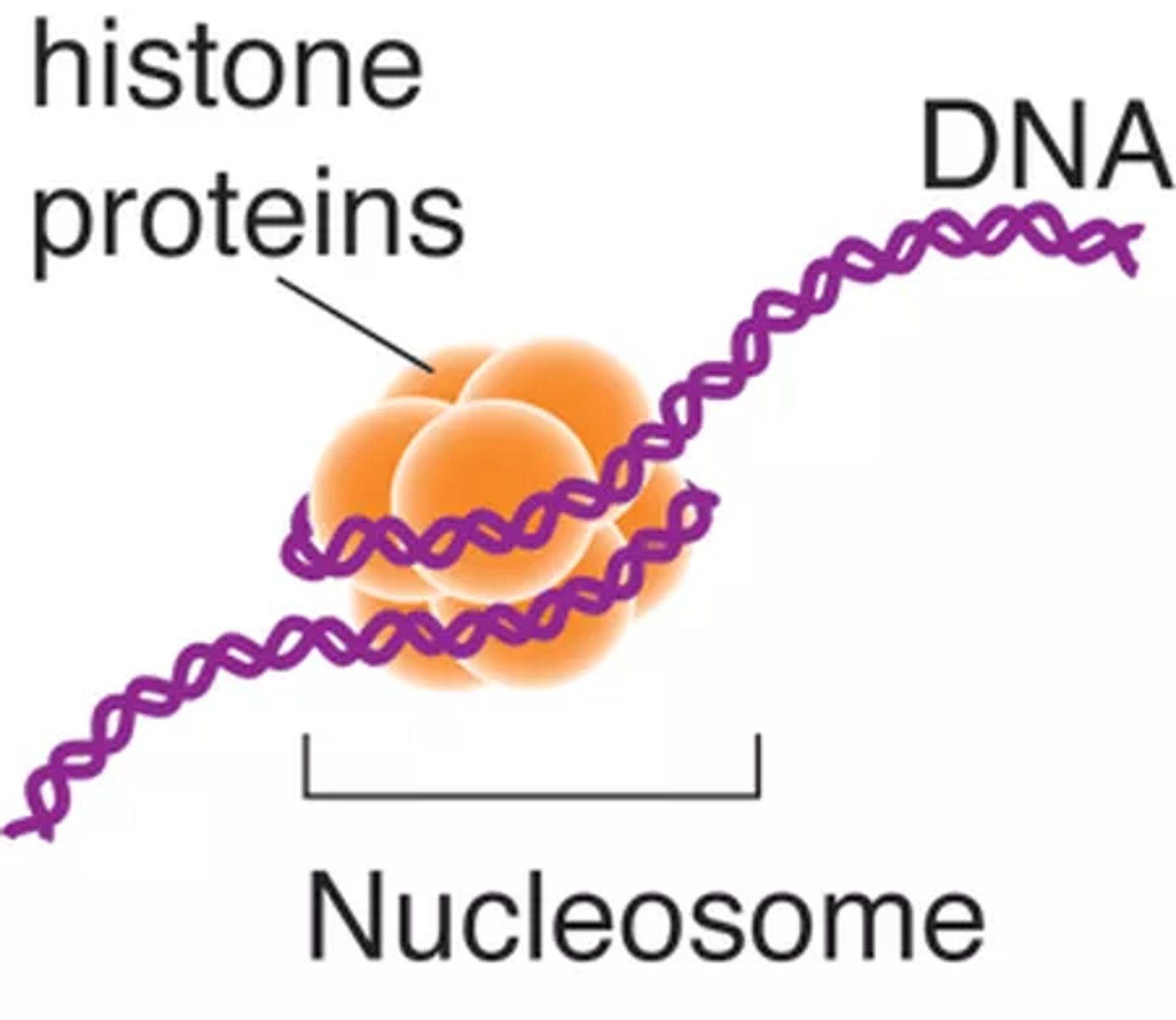
Histones
A family of small, positively charged proteins.

Charge of DNA
Due to the phosphate groups in nucleotides, DNA is negatively charged. DNA binds tightly to the histone proteins using electromagnetic attraction
Gene knockout
A technique for investigating the function of a gene by changing it to make it inoperative.
Gene expression
The mechanism by which information in genes has effects on the phenotype.
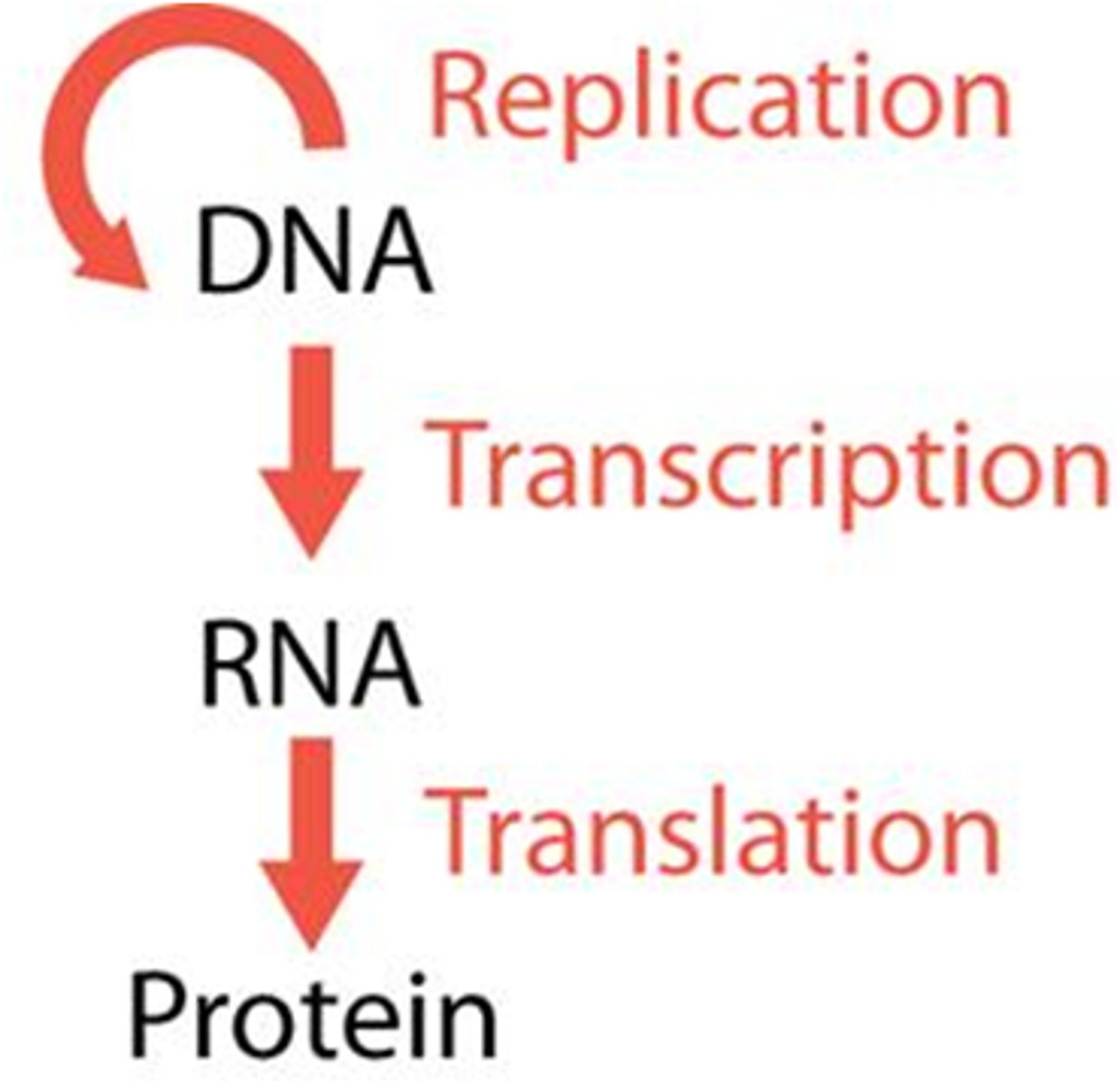
Genotype
Combination of alleles present.
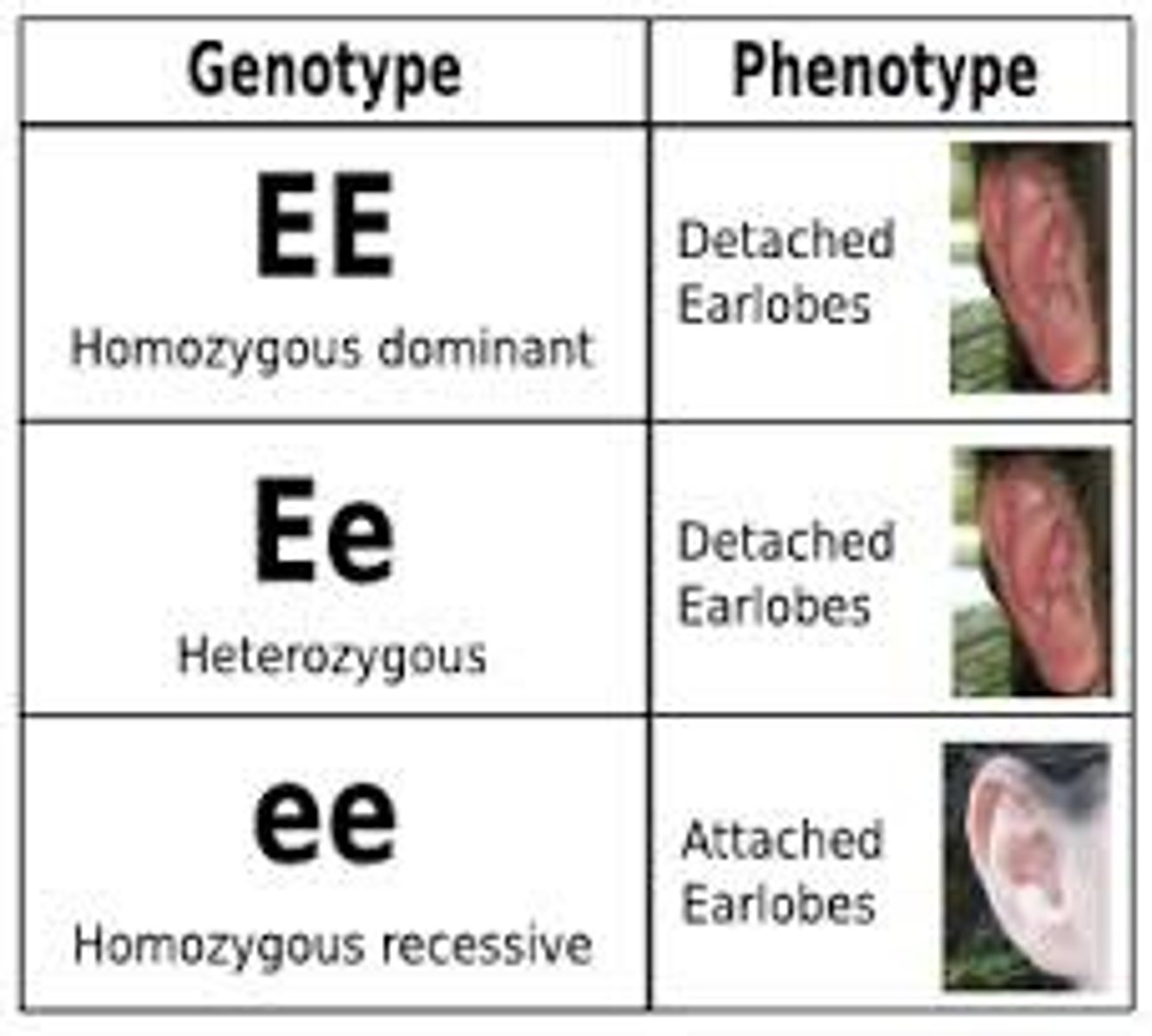
Phenotype
The characteristics of an organism.

Stages of gene expression
Transcription, translation, and the function of a protein product, such as an enzyme.

Sex chromosomes
Typical female: two homologous chromosomes (XX); Typical male: one of each, nonhomologous chromosomes (XY).

SRY gene
A gene on the Y chromosome that becomes active at about two months of development, causing immature gonads to develop into testes.

Testis-Determining Factor (TDF)
The protein coded by the SRY gene that activates processes causing a fetus to develop testes.

Gene locus
Where on the chromosome a gene is located.
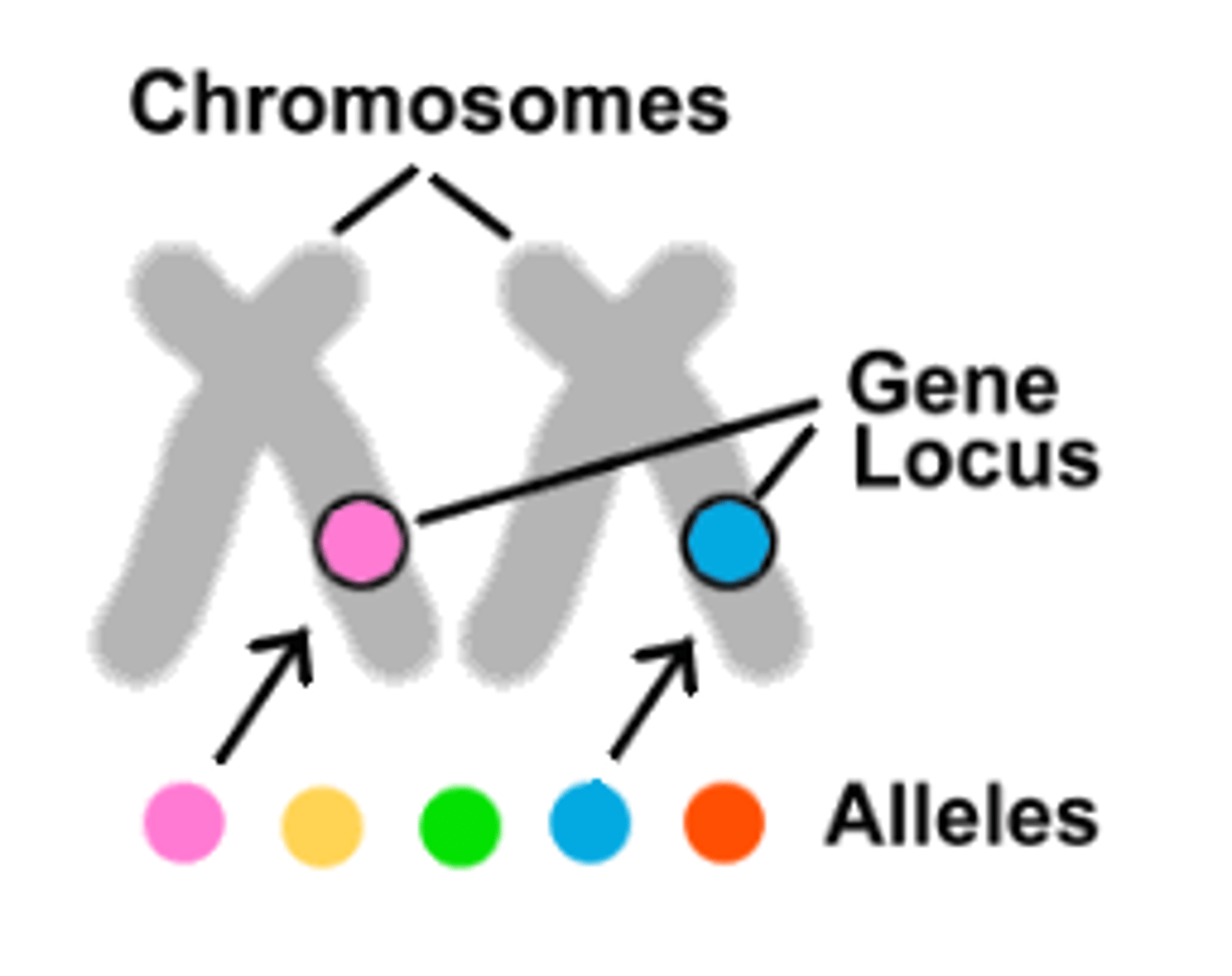
Cytokinesis
The division of cytoplasm during cell division, which is usually equal but can be unequal.
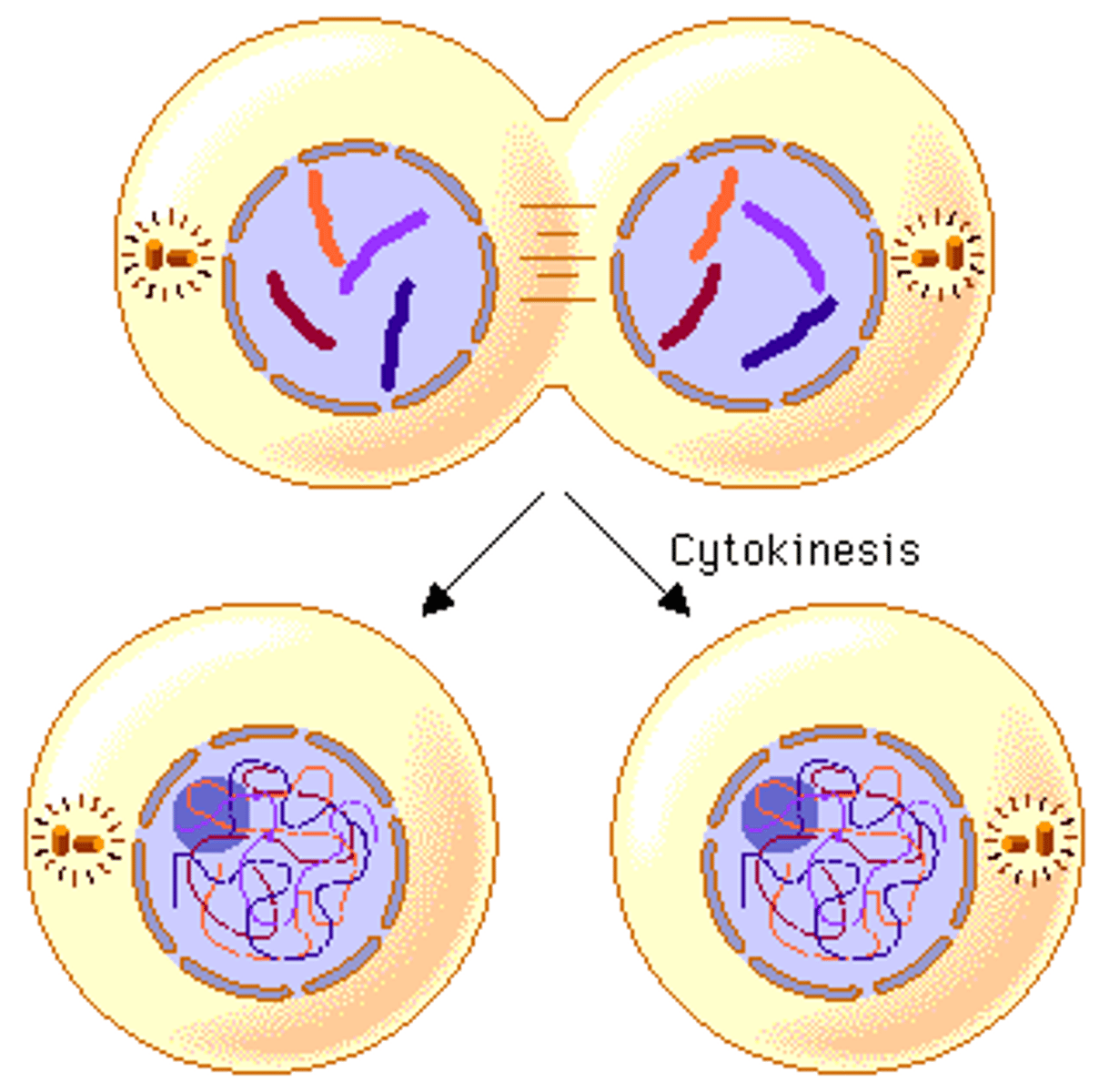
Unequal cytokinesis in oogenesis
In humans, cytokinesis divides the cytoplasm unequally, producing one large cell (oocyte) and one small polar body.

Mitochondrion requirement
Both daughter cells must receive at least one mitochondrion and any other organelle that can only be made by dividing a pre-existing structure to survive.
Budding in yeast
Yeast cells reproduce asexually by dividing their nucleus by mitosis and receiving one of the nuclei with only a small share of the cytoplasm.
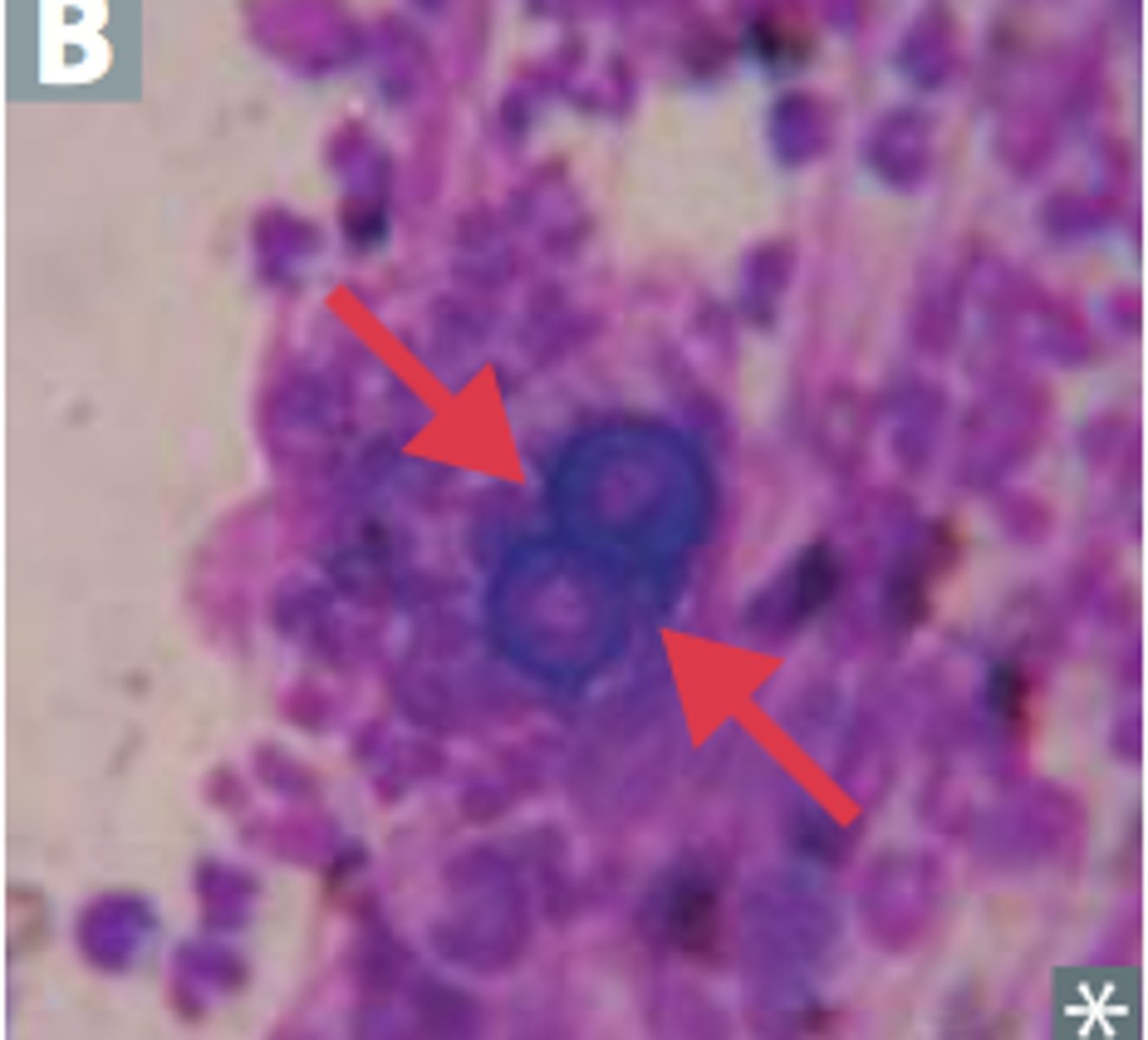
Oogenesis
The process in humans where usually only one egg cell (oocyte) is produced at a time, with enough stored food to sustain the developing embryo.
First division in oogenesis
Produces one large cell (with most of the cytoplasm) and one small polar body that does not develop further.
Second division in oogenesis
Only the large cell undergoes the second division, again unequally, resulting in one mature oocyte and another small polar body.
Human sex determination
Biological sex includes structural and functional characteristics determined by sex chromosomes and genes.
Chromosome pairs in humans
The 23rd pair of chromosomes in humans determines sex, with more genes carried by the X chromosome than the Y chromosome.

Knockout strain development
Develop several thousand knockout strains, each lacking one gene.
Gene function investigation
Predict which base sequences in a genome are games by characteristic base sequence patterns.
Budding process
Yeast cells carry out this budding process repeatedly and do not have to double in size between each division.
Nuclear division
Nuclear division is needed before cell division to avoid production of anucleate cells.
Mitosis
Mitosis maintains the chromosome number and genome of cells.
Meiosis definition
Meiosis is nuclear division that results in reduction of the chromosome number and diversity between genomes.
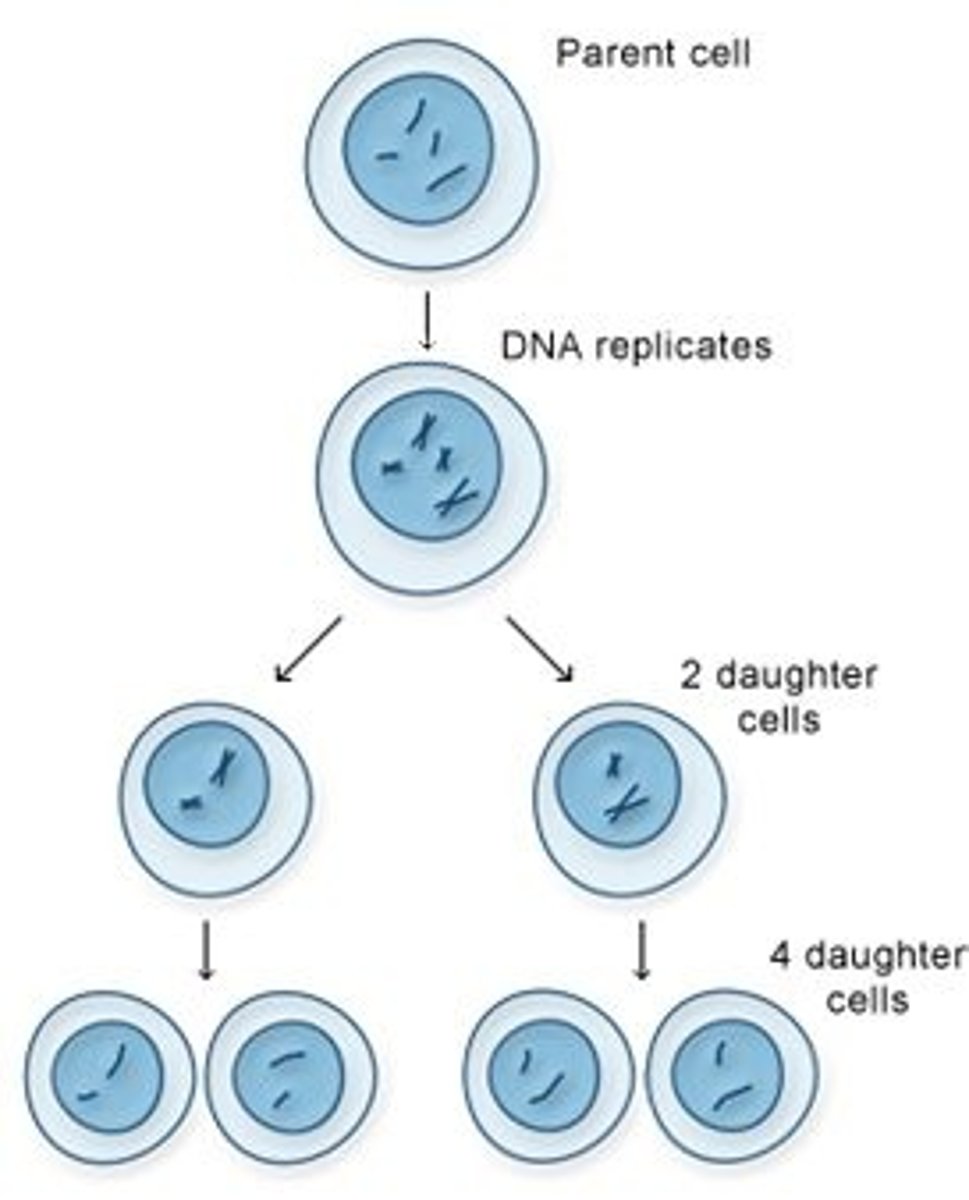
Chromosome condensation
Chromosomes condense during meiosis to separate & move elongated molecules without knots, tangles, or breaks.

Microtubules
Microtubules are hollow cylinders of tubulin proteins that can be rapidly assembled or disassembled to move chromosomes.
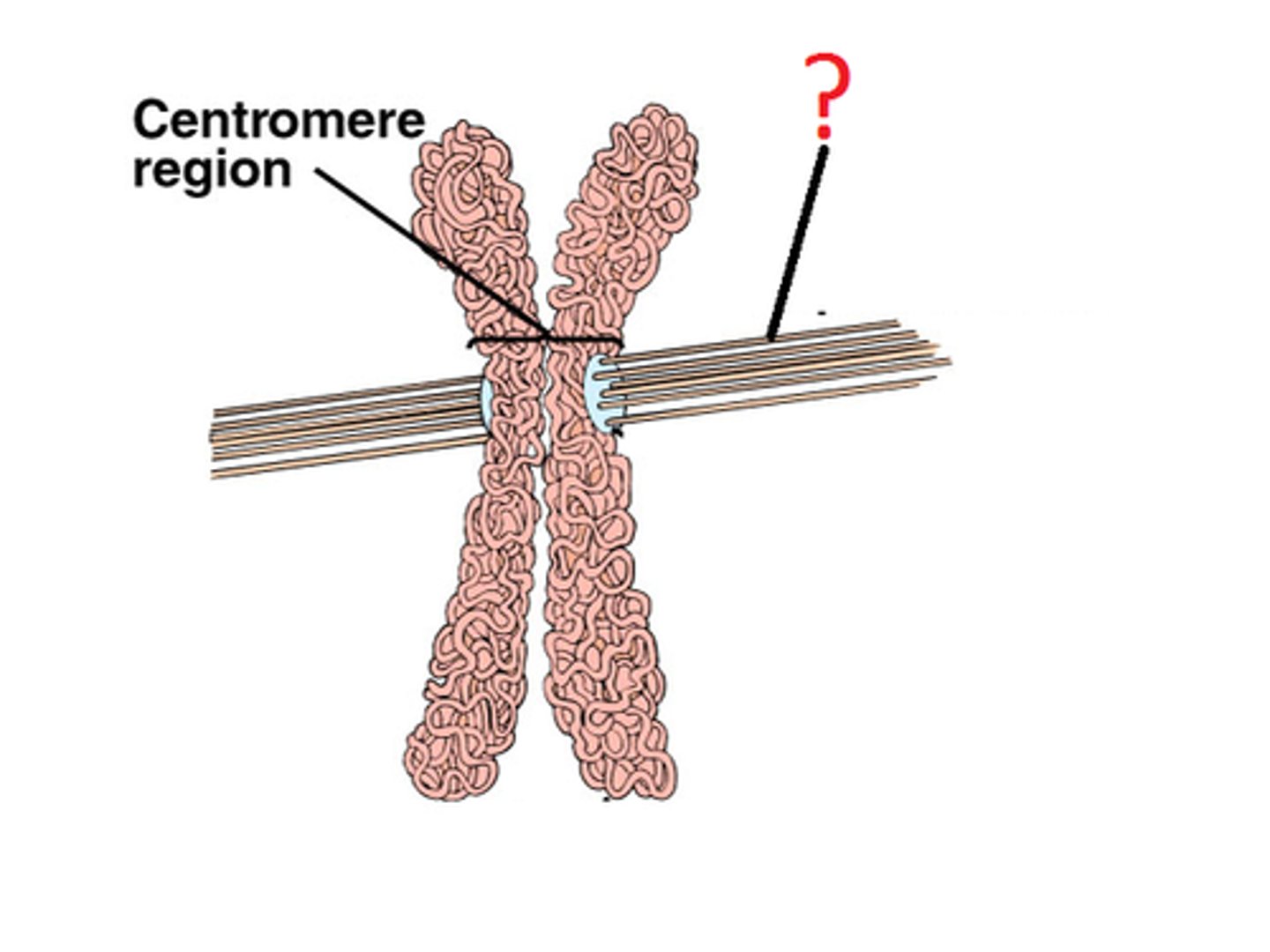
Kinetochores
Kinetochores are protein structures assembled on the centromere of each chromatid that link growing microtubules.

Diploid
Diploid is a homologous pair of each chromosome, with one copy of paternal and maternal chromosomes.

Human cell diploid number
The human cell diploid number is 46.
Haploid
Haploid is a single copy of each chromosome, with no chromosome pair.

Human cell haploid number
The human cell haploid number is 23.

Example haploid cells
Human sperm and egg cells are examples of haploid cells.
Meiosis I
Meiosis I is a reduction division where homologous chromosomes are separated to halve the chromosome number from diploid to haploid.
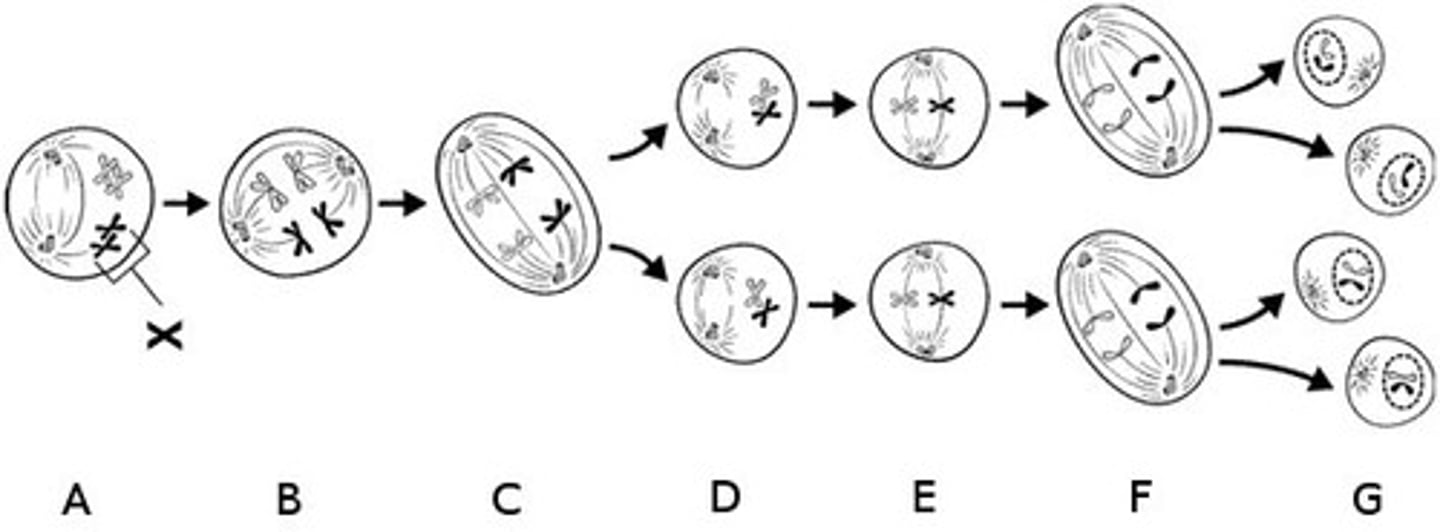
Interphase
During interphase, DNA replicates, and each chromosome (2n = 4) replicates to form sister chromatids, totaling 8 chromatids.
Homologous chromosomes
Homologous chromosomes share the same structural features and genes at the same loci positions, though alleles may differ.

Chromatid
A chromatid is one half of a duplicated chromosome, formed during DNA replication.
Segregation in meiosis
Meiosis involves two rounds of segregation to produce four haploid nuclei from one diploid nucleus.

Homologous Chromosome
Chromosomes that are homologous share same size, same banding patterns, and same centromere positions.
Nucleosomes
Nucleosomes are formed by wrapping the double helix of DNA around histones.
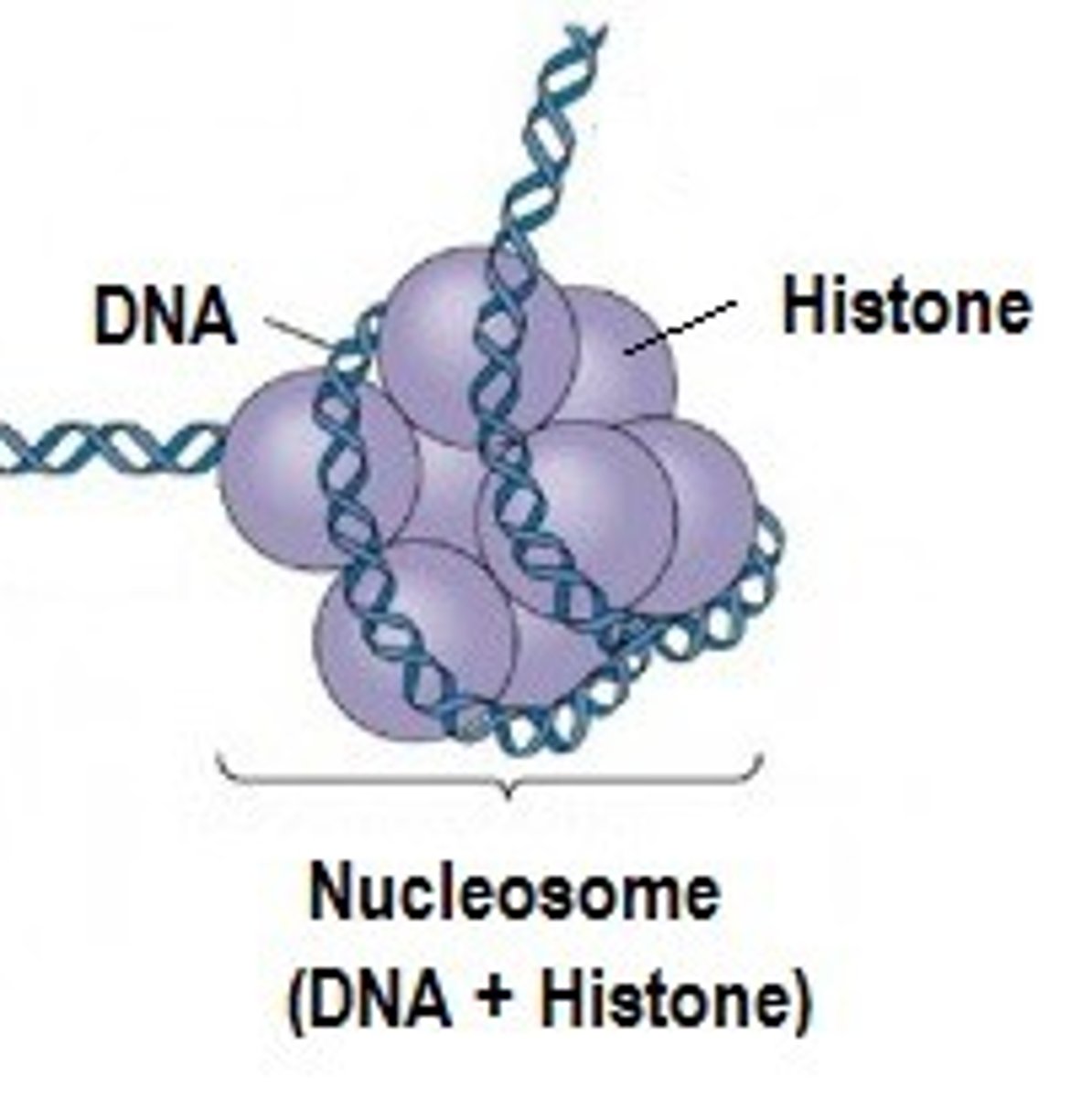
Prophase I
Diploid -> nuclear membrane begins to break down, spindle fibers begin to form, DNA condense/supercoil -> chromosomes, homologous chromosomes pair up, crossing over.
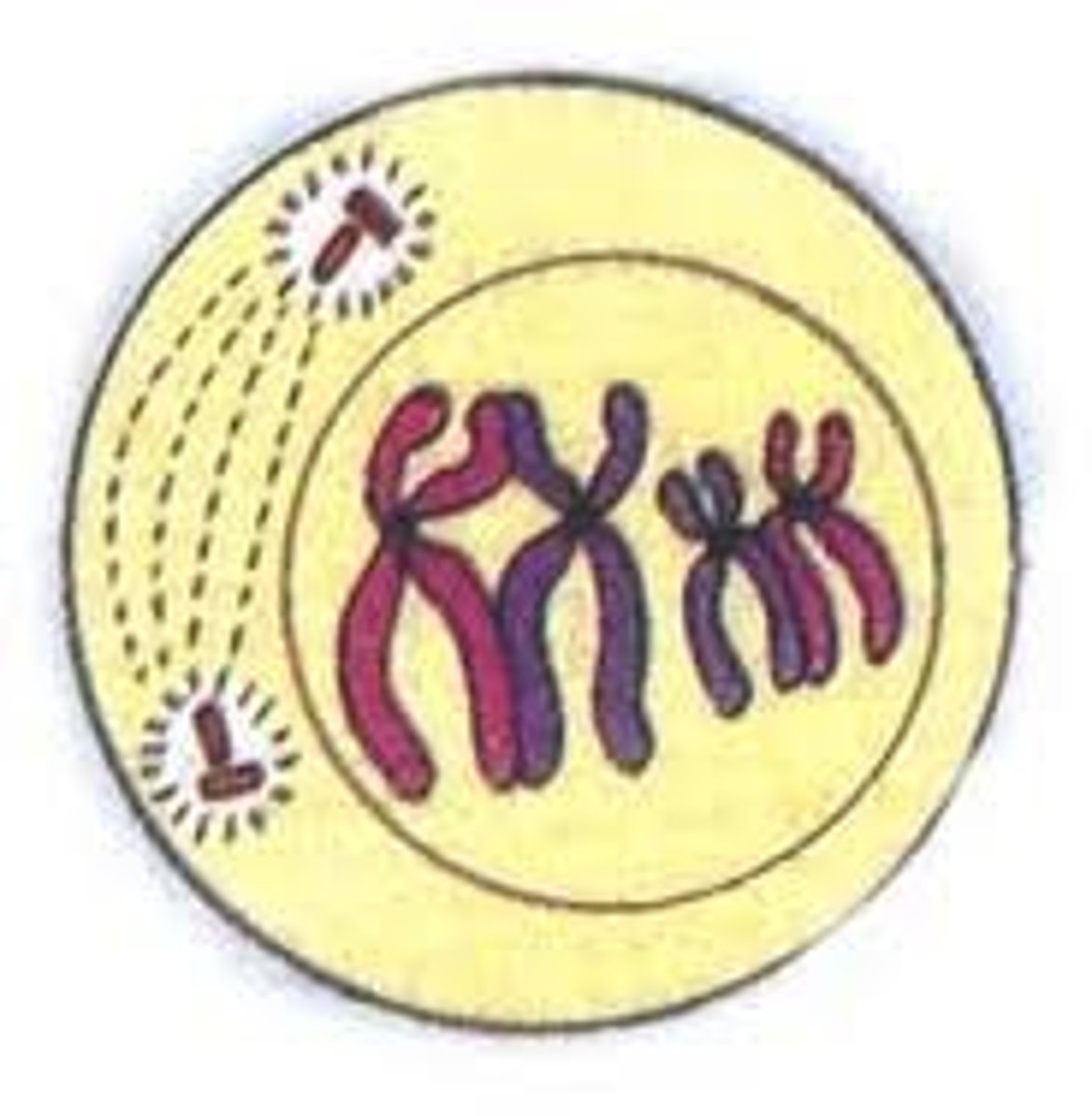
Metaphase I
Homologous chromosomes are independently aligned/line up @ the cell, Diploid (2n).
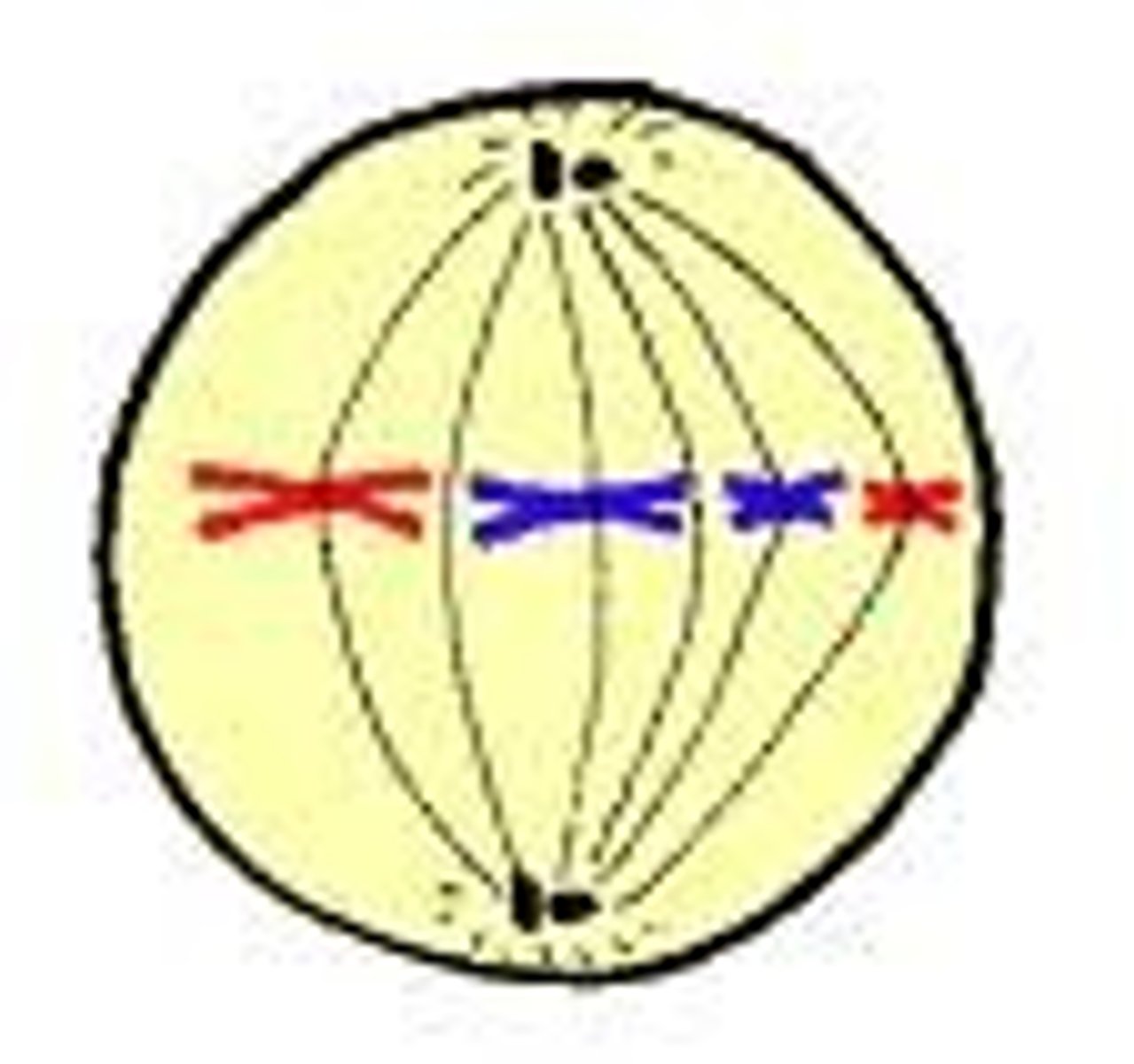
Anaphase I
Homologous pairs separate & each chromosome move towards opposite end of cells -> sister chromatids NOT separated, Diploid (2n).
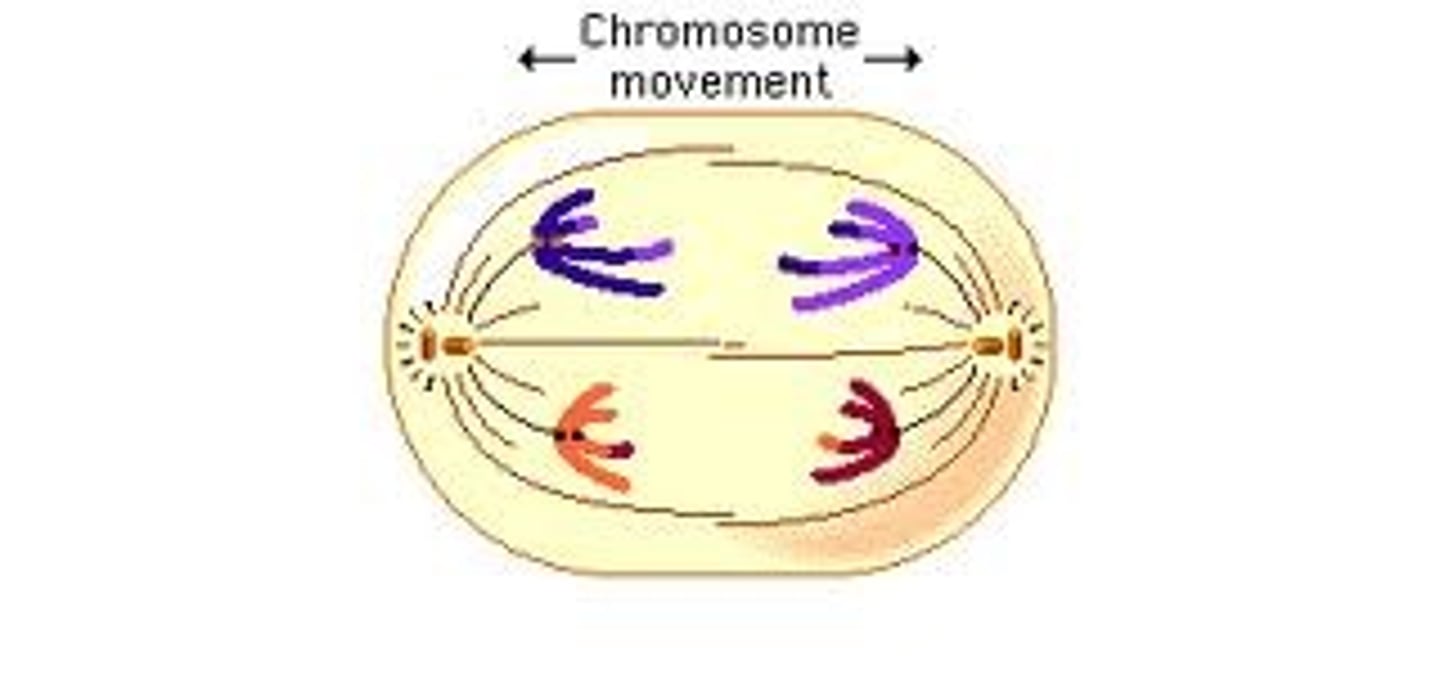
Telophase I & Cytokinesis
Occurs simultaneously, new nuclei form around chromosomes @ each pole, DNA uncoils chromosomes -> chromatin, spindle fibers break apart, results in two haploid cells.

Meiosis II
Sister chromatids are separated.

Prophase II
Spindle fibers begin to form, DNA condenses/super coils again into chromosomes, nuclear membrane begins to break down, Haploid (n).
Metaphase II
Aligned @ cell equator, Haploid (2n).
Anaphase II
Sister chromatids pull apart & move towards opposite poles of cell, Haploid (2n).

Telophase II & Cytokinesis
Occurs simultaneously, spindle fibers break apart & DNA uncoils from chromosome to form chromatin, results in four haploid daughter cells, all genetically unique.
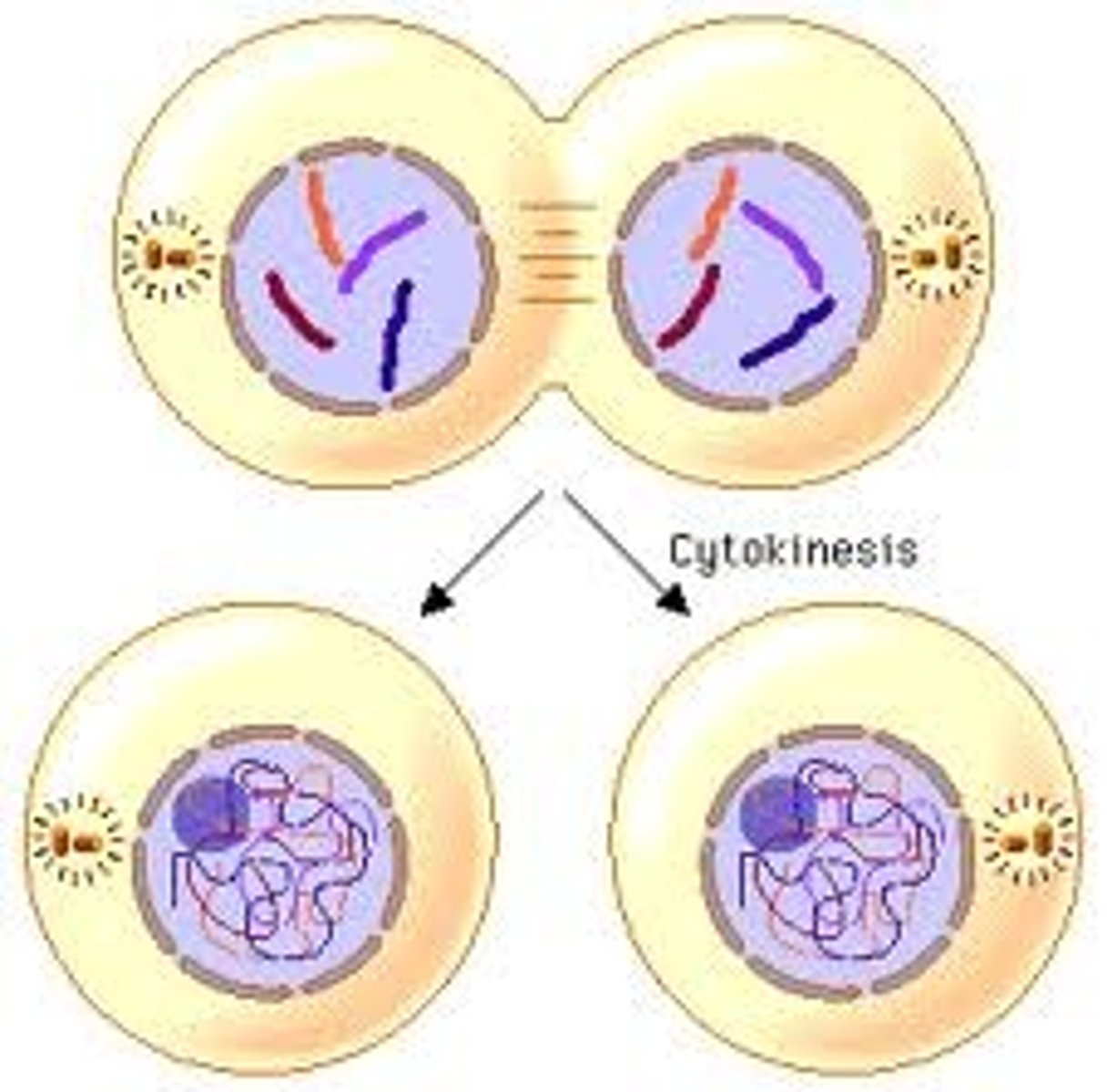
Chromosomes in Humans
46 chromosomes in humans
Meiosis I Reductive Division
Meiosis is known as the reductive division because it reduces the number of chromosomes in the daughter cell by half.
Haploid Cells After Meiosis I
2 haploid daughter cells at the end of meiosis I.
What is the main purpose of meiosis I?
To separate homologous chromosomes, promoting genetic diversity and evolution.
What is the result of mitosis?
Two genetically identical haploid daughter cells from a single parent cell.
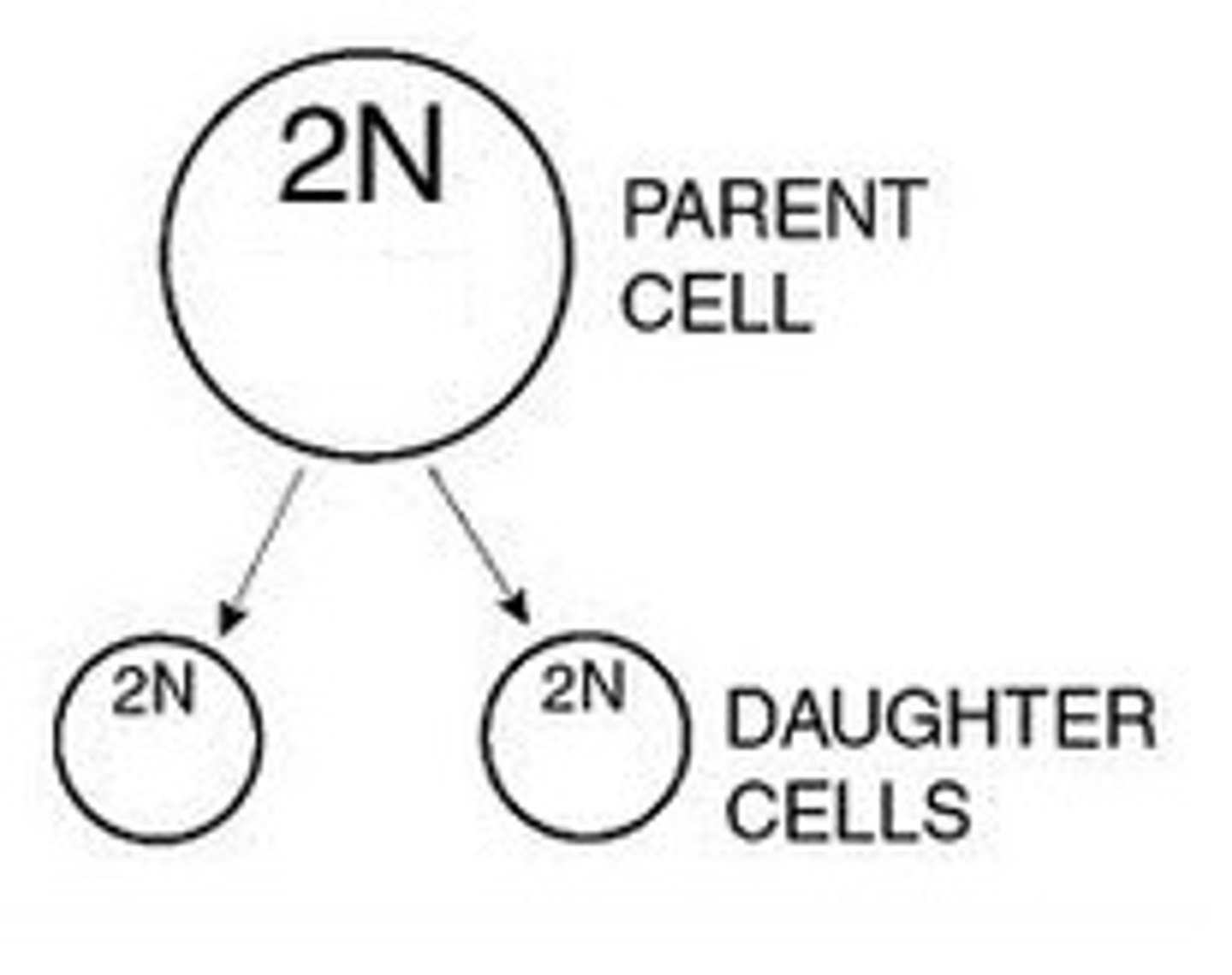
How many divisions occur in meiosis?
One division.
What is the main purpose of meiosis II?
To separate sister chromatids.
What is the result of meiosis?
Four haploid daughter cells that are genetically unique from the parent.

How does the DNA amount in daughter cells compare to the parent cell in mitosis?
Daughter cells have half the amount of DNA compared to the parent cell.
Prophase I Events
Diploid -> nuclear membrane begins to break down, spindle fibers begin to form, DNA condense/supercoil -> chromosomes, homologous chromosomes pair up, crossing over.
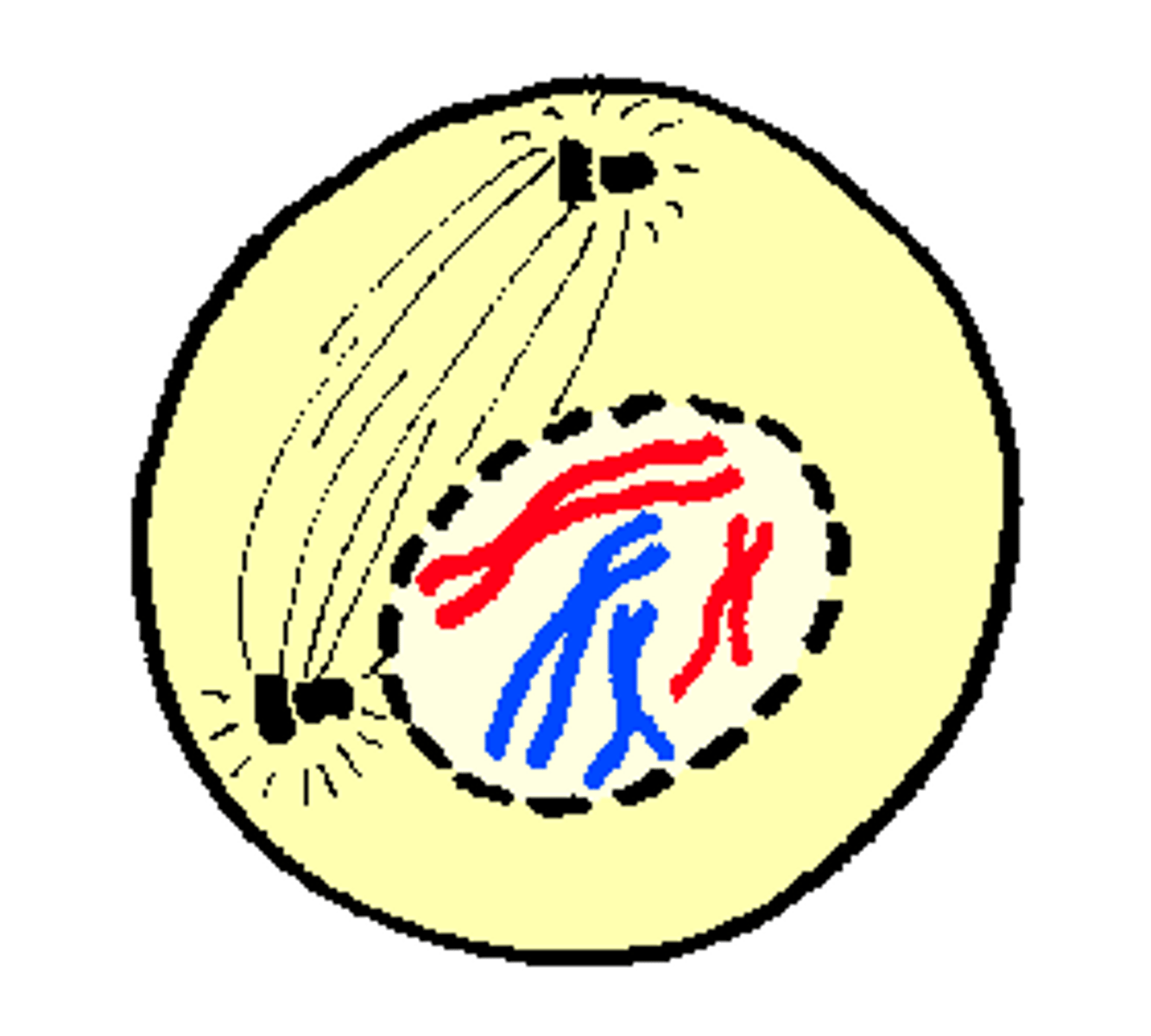
Metaphase I Events
Homologous chromosomes are independently aligned/line up @ the cell, Diploid (2n).

Anaphase I Events
Homologous pairs separate & each chromosome move towards opposite end of cells -> sister chromatids NOT separated, Diploid (2n).
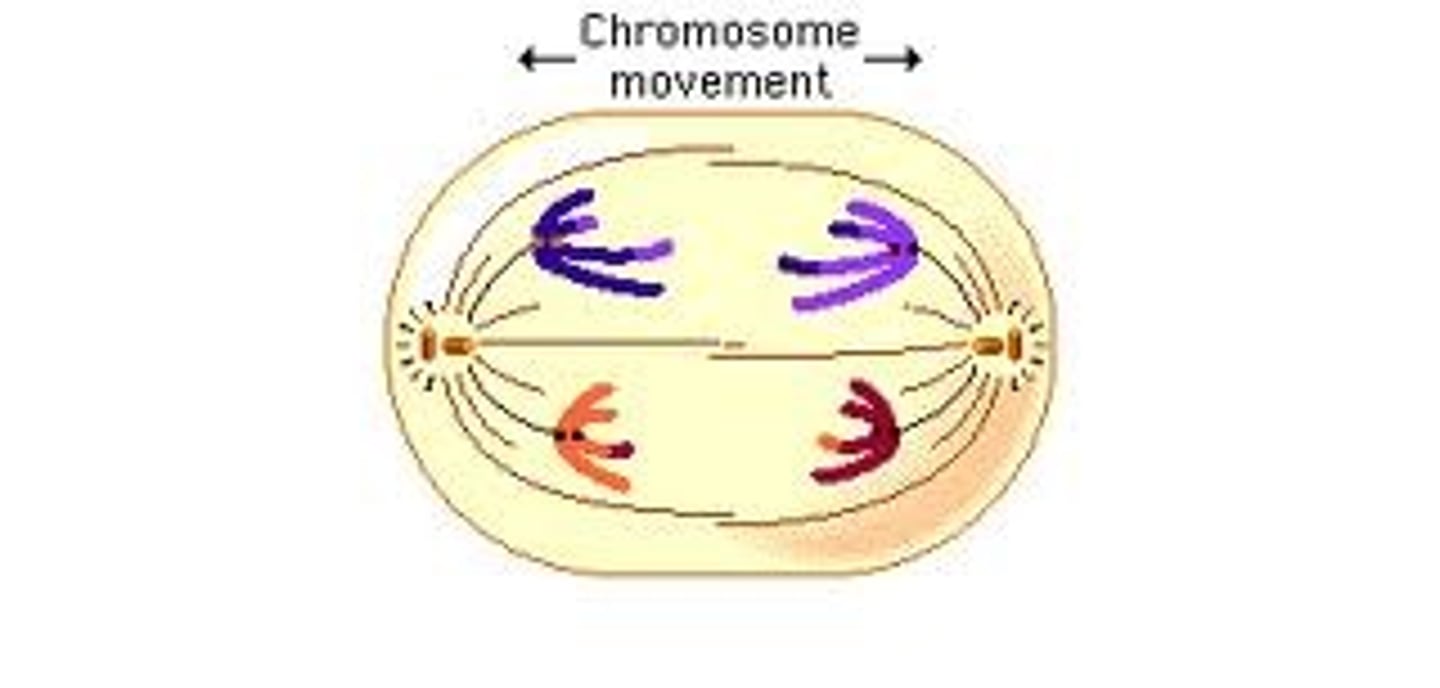
Telophase I Events
New nuclei form around chromosomes @ each pole, DNA uncoils chromosomes -> chromatin, spindle fibers break apart, results in two haploid cells.
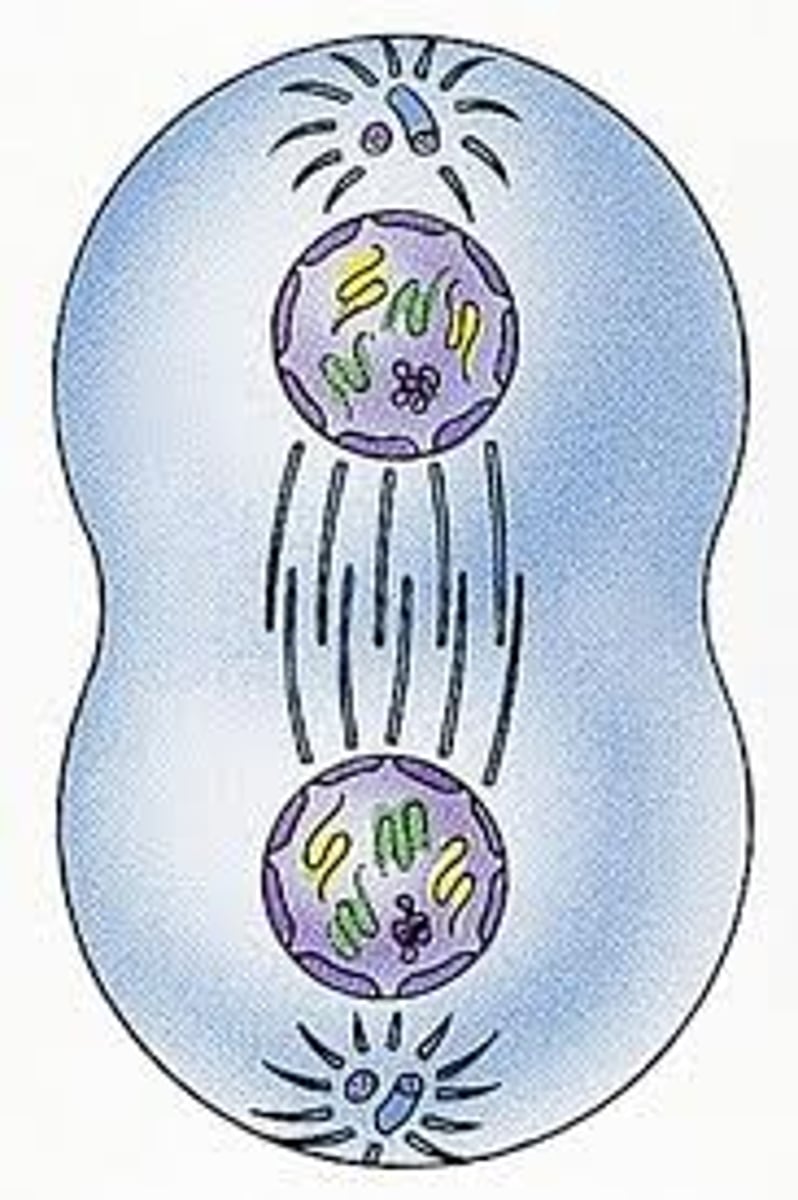
Prophase II Events
Spindle fibers begin to form, DNA condenses/super coils again into chromosomes, nuclear membrane begins to break down, Haploid (n).
Metaphase II Events
Aligned @ cell equator, Haploid (2n).
Anaphase II Events
Sister chromatids pull apart & move towards opposite poles of cell, Haploid (2n).
Telophase II Events
Spindle fibers break apart & DNA uncoils from chromosome to form chromatin, results in four haploid daughter cells, all genetically unique.
Nondisjunction
The failure of chromosomes to separate during either anaphase I/II of meiosis (error).
